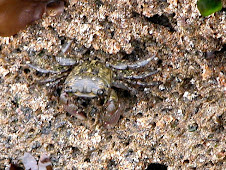After the surgery he checked online (who knew they had a computer with internet access in the operating section?!) and told us there was an 8.1 earthquake off the coast of Santo and now there's a tsunamai warning. In the maternity ward they turned on the radio (audible really only to the postpartum women) and we listened to warnings in Bislama, English, and French (then tropical music), advising everyone to go to higher ground, with an estimated wave arrival time of 5 to 15 minutes. They were saying the Ministry of Education had closed the schools and the kids were being sent home. I went back and forth a bit, weighing the baby, giving him shots, then helping him to breastfeed while the mother was in recovery. (We felt what we thought were aftershocks while she was in recovery. There was actually a second quake, but based on the timing, I think they were aftershocks, since this would have been after 10am and the first quake we felt was 9am.) Once she was settled in the postpartum area, we figured we'd go watch from the point at the top of the stairs down to the coast level, so we took our lunches and went our phone number in case the twin mom got close to delivery. They were saying the water in the bay in Santo had receded quite a bit, which seemed to suggest that there would be a big wave here. There were many others watching there as well, some with radios. I chatted with some Australian soybean farmers (covering a wide range of topics, from local obstetrics practices to genetically modified soybeans), but then the warning was lifted and everyone else left. There was some light rain, some wind, but not enough of either to cut the heat!
There aren't really any emergency services here (though we did see a coast guard-type vessel in the bay), but we're staying on fairly high ground (though close to the coast) so it would have been fine for us. They're accustomed to earthquakes but not tsunamais, so people were somewhat concerned. The Australian med student told us that the shelf of the reef makes it difficult for a wave to gather much momentum (as opposed to Samoa, where it's a very gradual incline up the ocean floor, which allows a wave to really collect itself). Would have been cool to see, but I guess it's fine it didn't happen.
Update: an initial news story and a later news story (post-non-tsunamai) about the quake and the warden message sent by the state department (I registered with the State Dept with my itinerary):
Dear Wardens
This warden message is being issued to alert U.S. citizens residing and traveling in Papua New Guinea, Solomon Islands and Vanuatu that a tsunami warning for ANUATU / SOLOMON IS. / NAURU / PAPUA NEW GUINEA / TUVALU / NEW CALEDONIA / FIJI / KIRIBATI / KOSRAE / WALLIS-FUTUNA / HOWLAND-BAKER
A tsunami watch is in effect for MARSHALL IS. / TOKELAU / KERMADEC IS / POHNPEI / NEW ZEALAND / SAMOA / AMERICAN SAMOA / TONGA / AUSTRALIA / NIUE / COOK ISLANDS / CHUUK / INDONESIA / WAKE IS. / JARVIS IS. / PALMYRA IS. / GUAM / N. MARIANAS / JOHNSTON IS. / YAP / MARCUS IS. / BELAU The U.S. Embassy will continue to monitor the situation, and will issue updated messages. U.S. citizens are urged to locate shelter, monitor media reports, and follow all official instructions. U.S. citizens should carry their travel documents at all time (i.e. U.S. Passport, Birth Certificate, picture ID's, etc.) or secure them in safe, waterproof locations. We also suggest that American citizens contact friends and family in the United States with updates about their whereabouts.


No comments:
Post a Comment